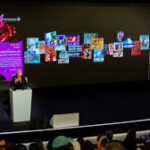Nowadays, in the era of image manipulation, there is no such thing as an image speaks by itself. Using sophisticated editing software such as Photoshop and artificial intelligence-based technologies, practically any image is possible to manipulate. It can be altered so closely that even a professional can hardly say the difference. With the spread of misinformation, fake media and deepfake fraud, there has become a demand to use reliable options to tell whether an image is real or not. Here comes the role of Photoshop detector.
Photoshop detectors are AI-based technologies that warn about the fact that a picture has or has not been edited. With the advent of a period when visual images are vital in news, business, and self-course, these detectors are spreading as truth verification and digital confidence elements.
What is a Photoshop Detector?
A Photoshop detector is an instrument, typically machine learning based, to analyze photos to infer editing/manipulation. Unlike basic image similarity search engines, contemporary detectors are more into the metadata, the discrepancies in the pixels, light, shadow, and the compression details, etc. Other detectors are even able to point out which Photoshop tools they used, e.g. clone stamps, warps, or content- aware fills.
Such systems are specifically useful in the sector where originality is of the essence; journalism, law enforcement, cybersecurity, and even insurance. They are able to establish whether a photo was subtly edited, often even behind the point when the person paying attention to it can notice this as well.
How the Photoshop Manipulation Is Related to the Deepfake Fraud
Although Photoshop has been used in image manipulation since the 1990s, deepfake tools have made manipulation cross a whole new level. Deepfakes are videos, images, or audio hyper-realistic reproductions of people that use artificial intelligence. In conjunction with Photoshop, this technlogy allows generating absolutely artificial content that may look true to life.
Such combination has produced a new ground of deepfake scam. Artificially intelligent (AI) and Photoshop edited media are not only being used to make forged legal documents and fabricated ID photos to impersonate people but also to subvert biometric security systems and allow them to deceive authorities. In 2023, a worldwide technology conglomerate released an incident in which fraudsters had switched an employee face with a deepfake and used faked credentials to obtain insider access to a vaulted network.
Considering the level of the stakes, it is not only important to detect when one is manipulating a PhotoShop, but also to eliminate identity theft, financial fraud and even corporate espionage.
Deepfake Detection Vs Photoshop Detection: What is the difference?
Despite the fact that deepfake identification and Photoshop detection aim at the same goal exposing altered media, they have a different focus as they are relevant to different sorts of forgery:
Photoshop Detection is specialized in image manipulation in a still picture. It finds such indicators as irregular lighting, pattern cloning, and metadata absence.
Deepfake Detection targets deepfaked and synthesized audio/video data, and the visual clues that can identify a fake are unnatural looking facial animations (e.g., unnatural blinking), distortion, lip-sync artifacts, and frame artifacts.
These technologies are, however, getting closer. The latest and most sophisticated Photoshop detectors are active in some cases today along with deepfake detectors, providing an all-in-one approach to rooting out manipulated digital media of any type.
The way Photoshop Detectors Work
Photoshop detectors are based on a mixture of digital forensic and machine learning. This is a sketch of the way in which they normally act:
Metadata Analysis: Tools search the metadata of the picture including timestamp inconsistencies, device information, etc., or a lack of editing history.
Error Level Analysis (ELA): It is a methodology that locates artifacts of compression to enable the domain of possible alterations.
Pixel Analysis: This analysis by AI algorithms is scanning pixel patterns, lighting and shadowing of how they are possible to be manipulated.
AI Model Training: Being trained using large datasets containing original and modified images, detectors can learn to understand the slight clues of manipulation.
Forensic Layers: Even the tools can depict the manipulation layers of the image that show where and in what way it was subjected to changes.
Real-World Applications
There is a quick growth of Photoshop detectors in most industries:
Between news corporations: Image forensics tools employ by news corporations to authenticate the real character of a crowed-sourced or breaking news images.
Legal/Law Enforcement: Digital forensics is increasingly being utilised by the courts in determining whether photographic evidence may have been tampered.
Social Media Platforms: Facebook and X (previously Twitter), the tech giants are implementing Photoshop and deepfake detecting tools in order to combat misinformation and fake profiles.
Finance & Insurance: Companies countercheck the photos and the ID files used in claims to find fraud cases.
The Problems of Photoshop and Deepfake Detection
As detection technologies are improving, they continuously crash against unceasing challenges:
Arms Race: In the same way, detectors are being developed continuously, and so are devices to bypass them. Photoshop and artificial intelligence image generators are becoming deft at creating forgeries that no one would suspect.
False positives/negatives: A few detectors may incorrectly identify legitimate edits (such as changes in brightness levels), or miss some imperceptibly faked images.
The absence of Standards: There is not a single universal criterion as to how to measure manipulation and that is why it may give different results on various websites.
In order to remain relevant, scholars are now discussing blockchain-powered verification systems and media authentication technologies by means of which edit history is introduced into the digital files.
The Career Progression
It is all the more important that detection tools are one step ahead as the deepfake technology advances. Photoshop detectors need to be a critical component to a larger ecosystem of digital verification, with AI-based deepfake detectors, media provenance, and digital watermarking.
Education to be among the public will also be important. Similarly to when people learned to identify phishing messages and online frauds, people should be educated on doubting what they see and check its authenticity, particularly in a world where false things become increasingly difficult to identify.
Final Thoughts
With the world being so much not faith-based in terms of visuals, Photoshop detectors are some missing links to digital integrity. Be it against misinformation, against deepfake fraud or defending the identity of an individual, these tools are the battlefront in a heavy game of truth. With ushering in the second wave of the information age, the one word that is certain is that, it is technology that brought about the problem and today, it is technology alone which can alleviate it.









